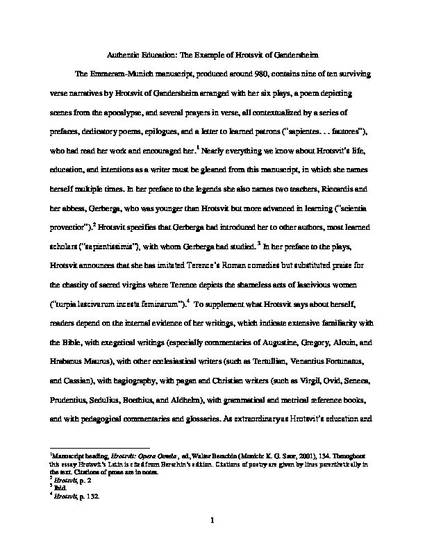
The Emmeram-Munich manuscript, produced around 980, contains nine of ten surviving verse narratives by Hrotsvit of Gandersheim arranged with her six plays, a poem depicting scenes from the apocalypse, and several prayers in verse, all contextualized by a series of prefaces, dedicatory poems, epilogues, and a letter to learned patrons ("sapientes. . . fautores"), who had read her work and encouraged her. Nearly everything we know about Hrotsvit's life, education, and intentions as a writer must be gleaned from this manuscript, in which she names herself multiple times. In her preface to the legends she also names two teachers, Riccardis and her abbess, Gerberga, who was younger than Hrotsvit but more advanced in learning ("scientia provectior"). Hrotsvit specifies that Gerberga had introduced her to other authors, most learned scholars ("sapientissimis"), with whom Gerberga had studied.
